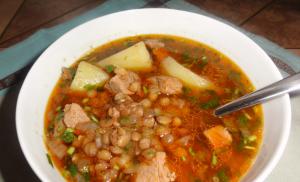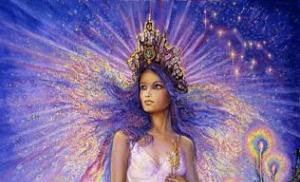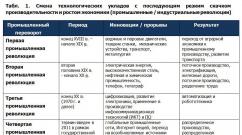Types of psychotropic drugs: action and side effects. The most dangerous psychotropic substances Psychotropic drugs and their side effects
Psychotropic substances are weapons of mass destruction, the victims of which are currently several hundred thousand people throughout Russia. This is not just from those who died from an overdose or the consequences. A significant part of addicts have lost a normal life, and also the prospects of getting out of the social bottom. Constant intake of synthetic poison destroys personality and transforms successful person into a burden for family and friends.
What are psychotropic substances?
The division of prohibited substances into drugs and psychotropics is a convention that has an indirect relationship to reality. Both the first and second drugs cause persistent dependence and negatively affect personality and health. However, psychotropics act somewhat differently, causing a change in a person’s mental state already from the first dose.
The most popular varieties of this poison are salts and spices, which are consumed in various ways. The substances are produced using artisanal methods and their quality is not controlled. Unlike “traditional” drugs (heroin, methadone, cocaine, LSD, morphine), the effect of psychotropics on the human body has not been studied enough.
It's safe to say that they instantly reduce cognitive function. To be clear, a spice addict will not be able to learn new language, master another profession, independently understand a complex book. Your thoughts will be occupied with something completely different: looking for money to purchase a new dose.
The most dangerous psychotropics:
- Spice(classical). The substance affects people differently and can cause death. The total number of deaths due to poisoning is estimated at several hundred throughout Russia annually.
- Amphetamine. The drug, which has a powerful effect on the body, can cause respiratory arrest and cardiac spasm. A sharp increase in body temperature leads to the breakdown of protein; without qualified help, a person will face inevitable death.
- Methaqualone. The psychotropic, actively used in the United States in the 70-80s of the last century, was mentioned in the famous work “The Wolf of Wall Street”. The main danger of methaqualone is a complex overdose, which is practically untreatable.
- Methylphenidate. The substance was developed for the treatment of mild mental disorders and diseases, including the treatment of drug addiction. However, an overdose of the drug has demonstrated side effects: cerebral hemorrhage, tachycardia, complex hallucinations, the occurrence of epilepsy and much more.
- Mephedrone(bath salt). The drug, which was positioned as a cheap alternative to cocaine, is a dangerous psychotropic. And although no fatal cases of poisoning have been recorded, the substance is a “springboard” for the leap to more dangerous drugs.
- Ketamine. The medicine, which after long-term use has actually fallen out of circulation, contributes to the formation of voids in the brain. And although many scientists dispute this thesis, it’s definitely not worth experimenting on yourself.
Mechanism of action on the body
Various psychotropic substances and their mixtures can cause certain effects, but drug addicts seek euphoria and pleasure. In addition, spices, salts, mixes, etc. can both calm and excite, provoking action. Given that all illegal substances are homemade, the concentration may vary from dose to dose.
If the relatively safe level is exceeded, irreversible consequences occur. High load on the heart forces this organ to work several times harder, which leads to heart failure. Without qualified help, this will lead to death as a result of poisoning.
Increasing pressure is a “crash test” for all body systems, primarily for the cardiovascular system. The brain suffers, bleeding into which is in best case scenario loss of functions, at worst - a “vegetable” state and subsequent death. Often, after psychotropic drugs, a person ceases to distinguish tastes and smells, and cognitive functions sharply decrease.
How psychotropic substances cause addiction
 It should be noted that dependence on salts, spice, amphetamine and similar drugs is somewhat different than on traditional drugs. Opiates, morphine, methadone cause strong physiological addiction, making the production of individual enzymes impossible.
It should be noted that dependence on salts, spice, amphetamine and similar drugs is somewhat different than on traditional drugs. Opiates, morphine, methadone cause strong physiological addiction, making the production of individual enzymes impossible.
Psychotropics act differently: they “give” a range of indescribable sensations, the whole body seems to be working in emergency mode, spending its “reserves” within a few minutes. This is a release of emotions, a completely new experience that the addict wants to return again and again. To do this, you have to increase the dose, but the desired effect no longer occurs. Young people instantly turn into old people who cannot work, study, and need special therapy and treatment.
Psychological addiction is difficult to treat: standard detoxification is not enough, because the breakdown products of psychotropics almost do not accumulate in the tissues. But it is very difficult to get rid of the craving for thrills: it will take years of work.
Stimulating effect
Many psychotropic substances (for example, salts) are used by drug addicts to speed up the reaction. However, it is impossible to control the dose, which would bring only a stimulating effect. After it is exceeded, another extreme will occur - loss of control over oneself, severe intoxication.
In this state, a person is capable of committing senseless and desperate acts. Thus, one young man in central Russia, after taking spice, raped an old woman, for which he received a real prison sentence. In neighboring Belarus, two guys, under psychotropic drugs, tore out a third man's eyes with their bare hands - he remained disabled for the rest of his life. Such stories can be continued for a very long time - there are hundreds, if not thousands.
Neurosuppressants
However, not all psychotropics cause an attack of activity: some have the exact opposite purpose. They calm you down and help regulate the production of dopamine, serotonin and other hormones that affect mood. In the United States, neurodepressants are called “legal psychotropics,” and hundreds of thousands of people use them in this country.
But these products carry many dangers, some of which have not yet been studied. A banal overdose causes exactly the same sensations as from ordinary spices and salts. The frantic work of the heart can abruptly end when it stops. A sharp increase in pressure is just one step away from a burst blood vessel in the brain, which will lead to irreversible consequences.
Consequences of using psychotropic drugs:
- Rapid wear of internal organs;
- Decreased cognitive function;
- Strong psychological dependence;
- Uncontrollable behavior;
- Negative personality changes (temper, aggression, anger);
- Instant loss of qualifications and ability to learn;
- Deterioration of coordination;
- Decreased physical skills (detrimental to athletes).
Video Top 5 most dangerous drugs
Drug addiction?
Get a consultation now
In the treatment of diseases associated with disorders and changes in the human psyche, a large group of drugs called psychotropic drugs is used. In addition to some medications, a number of substances that can change the consciousness of a healthy person and are not used in medicine (alcohol, narcotic substances, hallucinogens) also have psychotropic properties.
Psychotropic drugs: mechanism of action
The mechanism of action of drugs that affect the psyche is quite diverse. The main point is the effect of psychotropic drugs on the impulse transmission system in the neurons of the brain and changes in the concentration of certain substances - neurotransmitters (serotonin, dopamine, bradykinins, endorphins, etc.), as well as changes in metabolism at different levels of the central nervous system.
Psychotropic drugs: classification
Like any medications, medications that affect the psyche are divided into several groups. Depending on the effect, all narcotic and psychotropic drugs are divided into:

In the 20th century, some psychiatrists made attempts to identify another group - psychedelics; however, at the moment, these substances are classified as hallucinogenic and are not used in medical practice(LSD, mescaline).
Psychotropic drugs that stimulate the central nervous system
This group is used for diseases that are accompanied by inhibition of the functions of the central nervous system, such as cerebral stroke, viral encephalitis. These include the drugs Piracetam, Gamma-aminobutyric acid, Ginkgo biloba.
and tranquilizers
These medications are used for mental disorders accompanied by increased emotional excitability (valerian, bromine salts, the drug Phenobarbital in small doses). Tranquilizers have greater selectivity of action only on emotional sphere(drug "Sibazon", benzodiazepines).
Antidepressants
These drugs allow you to reduce and level out the symptoms of depression (feelings of melancholy, hopelessness, apathy), which can be the result of objective reasons (unsettled life, everyday problems) or mental disorders (initial These include the drugs "Amitriptyline", "Glaucin", "Azafen" ", "Duloxetine".
Neuroleptics
An important representative of this group of psychotropic drugs is the drug Aminazine, which is used for psychosis (delusions, visual and auditory hallucinations, increased agitation) to relieve psychotic symptoms. This drug is also used to treat schizophrenia.

Almost all psychotropic drugs are and, if used incorrectly, can cause addiction and dependence. That is why they are classified as strictly controlled drugs and are available only with a prescription. By reading in an encyclopedia or asking your doctor about psychotropic drugs that are available to anyone, you can find out whether you need a prescription to purchase.
Ministry of Education of the Russian Federation
Penza State University
Medical Institute
Department of Psychiatry
« Psychotropic drugs »
Penza 2008
Plan
Introduction
1. Neuroleptics
2. Tranquilizers
3. Heterocyclic antidepressants
4. Monoamine oxidase inhibitors
Literature
INTRODUCTION
More than 1/3 of patients admitted to the ED have some type of mental illness, and one in five adults in the United States has been prescribed a psychotropic medication at some point. Therefore, the ED physician should be familiar with some psychotropic drugs, their side effects and toxic manifestations, as well as their unfavorable (for the patient) interaction with other medications.
There are five main classes of psychotropic drugs: antipsychotics; tranquilizers, sedatives and sleeping pills; heterocyclic antidepressants; monoamine oxidase inhibitors (MAO); lithium preparations. Of these psychotropic drugs, only two groups - antipsychotics and tranquilizers, sedatives and hypnotics - have received undisputed recognition at the ED level. Heterocyclic antidepressants, MAO inhibitors, and lithium are rarely prescribed by ED physicians, primarily because they have a long latency period and numerous side effects; In addition, their use requires careful and long-term monitoring. Treatment with antidepressants or lithium may only be initiated by the ED physician in exceptional cases after consultation with a psychiatrist, who will provide follow-up treatment and follow-up. The need for extensive pre-treatment examination and careful training of the patient in the practical use of these drugs also speaks against prescribing lithium, MAO inhibitors or heterocyclic antidepressants in the ED.
The ED physician must be well aware of emergency indications, commonly observed side effects, toxic reactions and interactions between psychotropic drugs. Caution when prescribing them should be the rule. Some cases may undoubtedly be complex and require assessment by a psychiatrist; Moreover, in addition to mental disorders, the patient may have serious somatic pathology. Patients with medical illnesses, a history of serious adverse reactions to psychotropic drugs, or a clear need for two or more psychotropic drugs, require consultation with a psychiatrist. Side effects and toxic effects of psychotropic drugs are discussed in detail in a number of guidelines.
1. NEUROLEPTICS
Indications
Since antipsychotic drugs have a symptom-specific (and not nosologically specific) effect, their use is advisable for almost all psychoses, regardless of their etiology ("functional", organic or medicinal). In emergency situations, they are most often indicated to control agitated behavior with signs of psychosis, which poses an absolute threat to the patient himself or to others. Exception to this general rule consists of patients with regurgitation symptoms, in whom aspiration may occur if sedatives are used, as well as patients with anticholinergic psychosis, in whom antipsychotic drugs can cause an exacerbation of symptoms.
Principles of application
Low potency antipsychotics, such as chlorpromazine (Thorazine) and thioridazine (Mellaril), can cause life-threatening hypotension and are therefore rarely used in emergency treatment. Highly active antipsychotic drugs such as haloperidol (Haldol) and fluphenazine (Prolixin) have relatively weak anticholinergic and alpha-blocking effects, which makes their use completely safe even in high doses. In emergency situations, they are the antipsychotic drugs of choice.
Although it is often recommended to begin treatment with small oral doses, this appears to be erroneous: the absorption of antipsychotics when administered orally is unpredictable and their therapeutic concentration in the blood cannot be achieved as quickly as when administered intramuscularly. Best results gives intramuscular injection of 5 mg of haloperidol (elderly - half this dose) every 30 minutes until the excitement stops. Injections into the deltoid muscle are preferred, since the blood flow in this area is 2-3 times greater than in the gluteal muscle. Although rapid resolution of delusions and hallucinations should not be expected, rapid neuroleptization eliminates hostility and agitation in virtually all patients when haloperidol is administered at a total dose of 50 mg or less.
Side effects
Antipsychotic drugs block dopamine receptors throughout the central nervous system. Their antipsychotic effect is associated with blockade of dopamine receptors in the mesolimbic region. Dopamine blockade of nerve endings in the substantia nigra and striatum is responsible for most motor side effects, including acute dystonia, akathisia, and Parkinson's syndrome.
Acute dystonia, usually occurring in young men during the first few days of antipsychotic treatment, appears to be the most commonly observed side effect of antipsychotic drugs in the ED. Most often, there is a spasm of the muscles of the neck, face and back, but an oculogyric crisis and even laryngospasm may also occur. In the absence of a carefully collected medical history, dystonia is often misdiagnosed as a primary neurological disease (epilepsy, meningitis, tetanus, etc.). Dystonia is quickly relieved by intravenous administration of 1-2 mg of benztropine (Cogentin) or 25-50 mg of diphehydramine (Benadryl). Dystonia often recurs even when antipsychotic drugs are discontinued or their dose is reduced if antiparkinsonian drugs such as benztropine (1 mg orally 2-4 times daily) are not prescribed for several days. Akathisia (restlessness of the patient with a constant desire to move) may occur a few days or weeks after starting antipsychotic treatment. Akathisia, often misdiagnosed as increased anxiety or an exacerbation of mental illness, is exacerbated by subsequent increases in the dose of antipsychotic medications. Other extrapyramidal disorders, such as rigidity with the cogwheel phenomenon and a dragging gait, may also appear as a side effect of antipsychotic drugs, but this is not always observed. Treatment in such cases is difficult. If possible, the dose of antipsychotics should be reduced. Antiparkinsonian drugs such as benztropine given orally 1 mg 2-4 times daily may provide some relief. In persistent cases, a change in antipsychotic medication may be necessary; sometimes resort to alternative treatment.
Antipsychotic-induced Parkinson's syndrome is particularly common in the elderly and usually occurs in the first month of treatment. A complete Parkinson's syndrome, including bradykinesia, resting tremors, muscle rigidity with a cogwheel phenomenon, a dragging gait, a mask-like face, and drooling, may be present, but often only one or two features of this syndrome are present. In such cases, reducing the dose of antipsychotics and/or prescribing anticholinergic drugs is usually effective.
While antidopaminergic side effects (acute dystonia, akathisia, and Parkinson's syndrome) occur more frequently with high-potency antipsychotics, anticholinergic and anti-alpha-adrenergic effects are commonly observed with low-potency antipsychotics. Both anticholinergic and alpha-blocking effects are dose-dependent and are much more common in the elderly.
Anticholinergic effects range from mild sedation to delirium. Peripheral effects include dry mouth, dry skin, blurred vision, urinary retention, constipation, paralytic ileus, cardiac arrhythmias, and exacerbation of narrow-angle glaucoma. "Central" anticholinergic syndrome is characterized by dilated pupils, dysarthria and delirious agitation. The most reasonable solution in such cases is to discontinue anti-psychotic medications and carry out supportive treatment. Slow intravenous administration of 1-2 mg of physostigmine can temporarily relieve the syndrome; however, this drug is highly toxic and is reserved for life-threatening conditions.
Cardiovascular Side effects occur almost exclusively with the use of low-potency antipsychotics. Alpha blockade and negative ionotropic effects on the myocardium can cause severe orthostatic hypotension and (rarely) cardiovascular collapse. Hypotension is usually easily corrected with intravenous fluids. In severe cases, alpha agonists such as metaraminol (Aramine) or norepinephrine (Levofed) may be needed.
Overdose
Antipsychotic drugs, when used in isolation, rarely cause fatal complications, but their overdose can create an extremely difficult situation to treat. With the exception of thioridazine (Mellaril), antipsychotics are strong antiemetics. The antiemetic effect may interfere with the pharmacological induction of vomiting, so gastric lavage is often necessary. Drugs with beta-adrenergic activity, such as isoproterenol (Isuprel), are contraindicated for cardiovascular stimulation, as beta-stimulated vasodilation may worsen hypotension. Extrapyramidal effects from antipsychotic overdose can also be significant and are best managed by intravenous administration of 25-50 mg of diphenhydramine (Benadryl).
What are psychotropics? Are they as harmless as some doctors claim? In what cases should you take medications that affect the psyche? The article provides a list medicines to restore the nervous activity of the body.
Psychotropic drugs
Psychotropics affect the functioning of the central nervous system and bring the mental structure into an altered state of consciousness.
Severe depression is a common reason when people resort to psychotropic medications.
Main symptoms caused by depression:

If depression cannot be cured natural means, for example, relaxation, auto-training, a change of environment, when the patient does not even have the strength to get up from the pastel in order to begin any actions, then psychotropics are prescribed.
Classification of psychotropic substances by mechanism of action:

Antidepressants
Prescribed to reduce anxiety and temporarily increase vitality. Antidepressants, by regulating the concentration of one or more mediators - norepinephrine, serotonin, dopamine, correct the mechanism of brain activity that is disrupted as a result of manic depressive states.
Antidepressants relieve depression and have an stimulating effect.
Let's go through the list of the most popular medications. Each medication has its own characteristics, which allows the doctor to take an individual approach to treatment.

Moclobemide
The drug stimulates the immune system to fight depression, improves the psycho-emotional state, activates physical activity, increases the ability to concentrate. Prescription for social phobia, depressive psychosis and mania, alcoholism, schizophrenia, neurotic and manic depression.
Side effects: pain in the head, loss of coordination, gastrointestinal disorders. Moclobedim blocks metabolic processes in the body, so long-term use is prohibited.

Fluoxetine
Neutralizes depressive states, eliminates feelings of obsession and depression. The drug selectively blocks the reversal of serotonin. Prescribed for depression subject to various indications, nervous excitability, compulsive disorders.
Fluoxetine, unlike other psychotropics, does not reduce receptor activity.
The drug is contraindicated in people who have a risk of seizures, kidney or liver failure. Side effects: serotonin poisoning, gastric dysfunction, dizziness, nervousness.

Sertraline
The antidepressant is an innovative product, as it most effectively counteracts obsessive states and manic syndrome. Prescribed for depression, mania, and seasonal disorders. Contraindicated for children. It is forbidden to take for a long period, pregnant women, as well as during breastfeeding.
During the period of taking Sertraline, patients experience dilated pupils.
Side effects: insomnia, nausea, vomiting, excessive sweating, irritability, stomach upset, decreased libido, delayed ejaculation, failure menstrual cycle.

Tranquilizers
Today there are a huge number of tranquilizers. The task of tranquilizers is to eliminate mental stress and activate positive emotions. The group has a hypnotic, anticonvulsant, muscle-relaxing effect. The main diseases for which tranquilizers are used are neurosis-like conditions and nervousness.
Tranquilizers lead to a decrease in a person’s level of emotionality by suppressing excitation in the structure of the brain.

Amitriptyline
The drug has a strong sedative effect, fights depression, and acts as a pain reliever. Prescribed for severe depression, disorders of biological cycles, emotional swings, and chronic headaches. The drug should not be taken while under the influence of alcohol or drugs.
Side effects: overexcitation, hallucinations, blurred vision, rapid heartbeat, gastric disturbances. In case of overdose, immediately contact a medical facility.
Amitriptyline slows ventricular conduction and, in overdose, can cause severe intraventricular block.

Bupropion (Zyban)
Contains potent medicinal components. The mechanism of the drug reduces the effect on the area of the brain responsible for convulsive activity. Prescribed for depression, social phobia, smoking addiction, and affective brain disorders. Contraindicated for hypersensitive people with allergic reactions, prohibited for children and adolescents.
Bupropion weakens the effect of nicotinic receptors, therefore it is used in the treatment of nicotine addiction.
Side effects: nausea, epileptic seizures, skin rashes. An increased dosage is extremely harmful, high risk lethal outcome.

Afobazole
The light drug has no pronounced side effects and eliminates anxiety and depression. The medication is prescribed for anxiety conditions, disturbances in sleep-wake cycles, after heavy mental stress, and during periods of increased stress.
During use, hypersensitive people may experience allergies, increased sweating, and disturbances in the functioning of the stomach. The drug is not recommended for use in childhood or pregnancy.

Psychotropics of plant origin
There are medical developments whose recipes are based on products plant origin, not prohibited for sale. The content of St. John's wort gave the greatest results. The enzyme hypericin activates hormonal synthesis and stimulates the production of norepinephrine from dopamine. Medicines work well against depression and mania, block feelings of anxiety and fear, and neutralize the syndrome chronic fatigue. Medicines have a beneficial effect on the functioning of the nervous system, improve mood, and increase physical and mental endurance. Let's look at examples of antidepressants based on plant extracts:

Deprim
The herbal medicine, the base component is St. John's wort extract, has antidepressant properties and improves the functioning of the central nervous system. The drug improves mood, stabilizes sleep, and activates psychophysical endurance. Prescribed for low mood, mild depression. The medication is approved for over-the-counter release.
Side effects: nausea, vomiting, anxiety.
It is important for patients taking the drug Deprim to stop using alcoholic drinks and avoid exposure to UV rays.

Negrustin
Herbal antidepressant. Excellent fight against mild depression. Effective in recovery from stressful situations. Diagnoses for which the drug is prescribed: alcoholism, autism, bulimia, hypochondria.
It is recommended to exercise caution when prescribing the medication to patients with fructose intolerance.
Side effects: photosensitivity, dyspesia, allergic reactions. Reception is prohibited during periods of active sun.

Neuroplant
Herbal medicine based on dry extract of St. John's wort. Has a sedative effect. Neuroplant is prescribed during periods of depression, apathy, and decreased mental and physical ability. To achieve lasting results, use the course for up to 6 weeks.
Side effects: dry skin, photosensitivity, itching, pigmentation, increased fatigue, flatulence.
It is important to be careful when taking this medication vehicle and other potentially hazardous activities.

Novo-passit
Herbal herbal medicine of the tranquilizer group, created on the basis of extracts: valerian root, lemon balm, St. John's wort, guaifenesin. Combination drug with a sedative effect, supplemented by the anxiolytic effect of guaifenesin. Novo-passit is prescribed for neurasthenia, chronic mental stress, headaches, mild insomnia, and high mental stress.
Side effects: increased drowsiness, decreased concentration, muscle weakness, feeling tired.
During treatment with Novo-Passit, you should avoid drinking alcohol and driving.

Let's sum it up
Pharmaceuticals are developing rapidly and do not stand still. Innovative products enter the pharmacy market every day. The provided range of drugs is collected from the most popular psychotropic drugs today, each of which has a wide range of analogues. As you can see, the list of side effects is quite long, but it can be reduced if the drug is selected taking into account individual characteristics. In addition, to purchase psychotropics you need a prescription, since some medications contain narcotic substances, the circulation of which is prohibited by Russian law.
Based on the mechanism of action of antidepressants and tranquilizers, namely that they interfere with the functioning of the brain, treatment should be carried out strictly under the supervision of a doctor.
1Psychotropic drugs include a list of medications that are used to treat mental illness and nervous disorders. Psychotropic medications are also used to suppress the symptoms of these conditions. Psychotropic pills contain potent substances that become habit-forming when used over a long period of time. Based on this, medications are dispensed only with a doctor's prescription.
Mental disorders: symptoms
Mental disorders reflect an imbalance in a person's mental balance.
Mental disorders include a list of the following symptoms:
- depression;
- hallucinations;
- unreasonable anxiety, uncontrollable fear;
- panic attacks;
- asthenia;
- mania;
- insomnia;
- schizophrenia;
- delusional states, etc.
The most common type of mental disorder is depression. In this case, the doctor prescribes psychotropic drugs. List of signs of depression:
- loss of strength and mood;
- inhibited reaction;
- inhibition of motor activity;
- feeling of various feelings that suppress the personality (uncertainty, despair, guilt, lack of sleep, etc.)
In addition to these symptoms, the patient may suffer from excessive sweating, pressure changes, lack of appetite, blues and other manifestations of an unhealthy condition.
Severe stages of depression can lead to suicide. Therefore, the doctor prescribes a list of medications for therapy.
Hallucinations can be visual, auditory, or tactile. Auditory hallucinations are considered to be various voices, noises, and sounds imagined by the patient that are constantly disturbing or temporary. Visual hallucinations can appear in the form of individual fragments or a complete picture. Hallucinations of a tactile nature often appear after the appearance of auditory and visual ones. They can manifest themselves in the form of sensations from an imaginary influence. The patient must be prescribed psychotropic medications.
Anxious mental states are accompanied by a list of symptoms: severe nervous tension, rapid heartbeat, sweating, loss of self-control. Such symptoms can be provoked by certain fears that are greatly exaggerated in the patient’s mind (fear of heights, fear of confined spaces, fear of transport, and others).
Panic attacks are uncontrollable panic attacks. Symptoms panic attacks often mistaken for symptoms of heart disease. To accept correct list medications, you need to see a doctor.
The asthenic state is accompanied by a list of symptoms: severe fatigue, exhaustion, decreased activity, as well as irritability and frequent mood swings. Asthenia can occur after severe overwork or stress.
Mania manifests itself in highly agitated mental, emotional, physical condition person and inappropriate behavior.
History of psychotropics

In the early fifties of the twentieth century, scientists discovered psychotropic drugs. Aminazine and Reserpine laid the foundation for modern psychotropic drugs. Until this time, lists of primitive tablets were used to treat mental illnesses: corazol, insulin, caffeine. To treat neurasthenic disorders, lists of sedatives based on herbal components were used.
After 1952, substitutes for the drugs chlorpromazine and reserpine were studied and synthesized. Scientists have found that analogues of these drugs have a positive effect.
At the beginning of 1970, lists of new psychotropic drugs were received, one of which was the drug Piracetam.
IN modern world For the treatment of mental illnesses, a list of psychotropic pills that affect a person’s psycho-emotional state is widely used.
Classification of psychotropic tablets

Depending on the direction of action, psychotropic and narcotic drugs are divided into the following list:
- nootropics – psychotropic drugs that affect the functioning of the central nervous system;
- tranquilizers – medications that are used to treat feelings of anxiety and fear and have a calming effect;
- sedatives also have a suppressive effect on the excited nervous system and are included in the treatment list;
- Antipsychotic drugs are used in cases of psychosis;
- antidepressant medications.
List of Nootropic Pills
Medicines are used for disorders accompanied by a depressed state of the central nervous system: stroke, encephalitis, metabolic disorders of the body.
To treat these disorders, the following drugs are widely used:
List of tranquilizer drugs
These are psychotropic drugs that relieve anxiety, fear, and convulsive conditions. With long-term use of drugs, the body becomes addicted.
Tranquilizers include the following list of medications:

The drug chlordiazepoxide is used to treat obsessive mental states, neuroses and panic attacks. The use of psychotropic medication is not addictive.

The medicine Lorazepam has a stabilizing effect on the nervous system and has a hypnotic effect. The drug is used for neuroses and phobias.

The medicine Diazepam is available in tablet form. The drug blocks anxiety and obsessive states, eliminates insomnia.

The psychotropic drug Bromazepam is a potent sedative drug. The medicine is used to treat the following list of symptoms: panic attacks, neuroses and sleep disorders.

The drug Atarax is used to treat asthenic conditions and manifestations of various types of phobias. The medicine eliminates symptoms such as hot flashes, trembling and shortness of breath.

The drug Oxilidin has a sedative effect, accelerates the action of a list of sleeping pills and activates cerebral circulation.
List of sedative psychotropic drugs
Medicines have a calming effect and have a slight hypnotic effect. Used for mild nervous and mental disorders.
Sedative psychotropic drugs include:
- Bromine-containing drugs in mixtures (list of drugs Sodium Bromide, Potassium Bromide, Bromural, Bromcamphor)
- Psychotropic drug of plant origin (tinctures of valerian, motherwort, peony, passionflower herb extract)
- Medicines Barbiturates (Barbamil, Amytal, Phenobarbital, Barbital-Sodium, Phenibut)
- Combined psychotropic drugs (Corvalol, Valocardin, Valosedan, Passit, etc.)
List of psychotropic antipsychotic tablets
This is a list of medications aimed at treating psychosis, and in small doses is used for neurotic disorders. A side effect of the drugs is Negative influence to the hormone dopamine. A decrease in dopamine can lead to the development of drug-induced Parkenson's. The main symptom of the development of this disease is muscle stiffness and tremors of the limbs.
List of antipsychotic tablets are divided into two types:
- typical;
- atypical.
Typical medications include a list of strong drugs, the use of which has a negative effect on the body and causes side effects.
Atypical drugs include drugs whose active ingredients are the safest and do not cause side effects.
Typical antipsychotics include the following medications:
The psychotropic drug Tizercin is widely used in the treatment of disorders associated with delusional states; in small quantities, the drug can have a hypnotic effect.
Atypical neuroleptics, list of drugs:

The psychotropic drug Clozapine has mild sedative properties; the action of the drug is aimed at treating hallucinations and delusional states. Minimal risk of developing side effects.

Psychotropic drug Risperidone. Action of this medicine aimed at eliminating symptoms of psychosis, hallucinations, delusions, and obsessive states.

The psychotropic drug Olanzapine is prescribed for catatonic states and mental disorders. A side effect of long-term use is the emergence of a tendency to obesity.
This is a list of the main psychotropic antipsychotic drugs that are widely used in medical practice for the treatment of mental disorders.
List of psychotropic antidepressant medications
This list of psychotropic drugs has a sedative effect on anxiety and normalizes nervous activity. Medicines are divided into soothing, stimulating and balanced.
List of commonly used tablets:
Mianserin

Clomipramine
Maprotiline
Melipramine
Amitriptyline
Operating principle
The mechanism of action of the list of psychotropic drugs is very diverse. In most cases mental illness Antidepressants and antipsychotics are used. Depending on the patient's condition, the dose ratio may vary as prescribed by the doctor. Psychotropic drugs affect transmitted brain impulses and change the ratio of neurotransmitters, and also change the metabolic processes of the central nervous system. Neurotransmitters include human hormones - endorphins, serotonin, dopamine and others.
Side effects

Since the doses used to treat patients are usually higher than normal, in most cases there are side effects that may require you to stop taking the list of pills.
Side effects can manifest themselves in the form of dry mouth, a feeling of dry skin, increased sweating, and side effects. gastrointestinal tract, heart rate fluctuations, urination problems. All these drug symptoms will soon disappear.
If there is a deterioration in a person’s physical health, treatment is stopped and replaced with other psychotropic drugs.
Violations may occur from endocrine system. In women it manifests itself in the form of menstrual irregularities, and in men there are problems with potency. These are acceptable deviations during treatment with psychotropic medications, which gradually disappear and do not require medical intervention.
Liver dysfunction may also occur. The list of remedies causes symptoms of failure: headaches, hepatic colic, nausea and vomiting. If these manifestations occur, you should stop taking the list of medications and consult a doctor, as liver failure may develop.
Another disruption in the functioning of the human body may be a drop in the level of leukocytes below the permissible norm of 3500. This indicator requires immediate cessation of treatment with the list of drugs.
It is important to remember that taking a list of psychotropic medications should only be started in extreme acute cases of mental disorder, as they have an effect on personal qualities person, his activity and social orientation. If possible, you should use alternative ways to get out of depression, for example, contact a psychologist and try to solve the problem without using pills.













